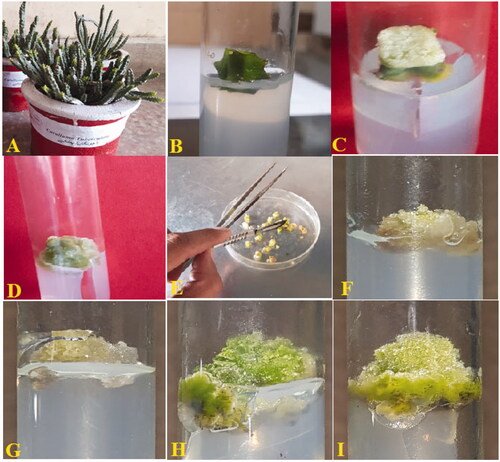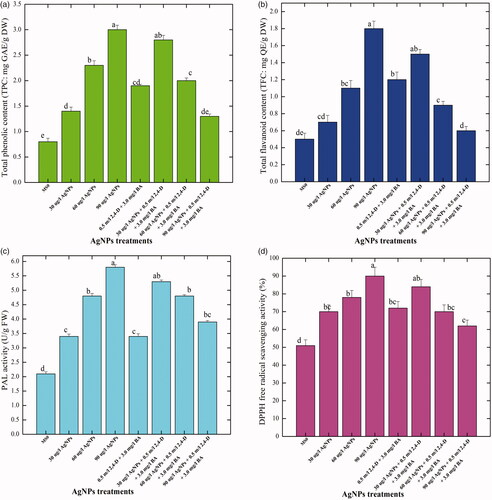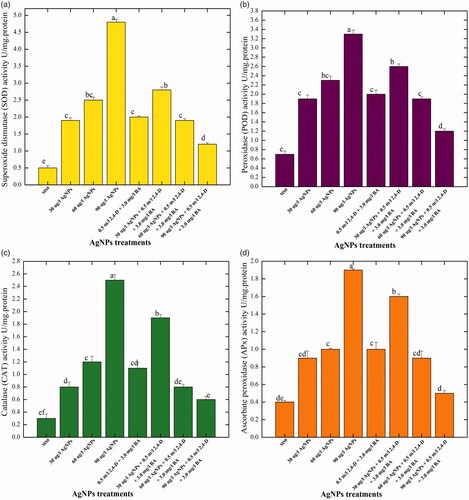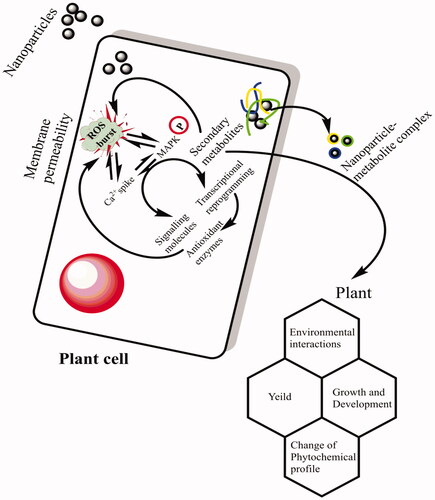Figures & data
Figure 1. Synthesis and characterization of AgNPs. (A) 40 nm silver nanoparticles, (B) representative spectra of silver nanoparticle dispersion, 10–200 nm, (C) TEM of 40 nm silver nanoparticles. Representative TEM, batch-to-batch variation may be expected.

Figure 2. Pictorial presentation of the in vitro cultures in Caralluma tuberculata (A). Explant inoculated on culture media (B). Callus initiation from explant (C). Callus induction on MS media with 2,4-D (0.5 mg/L) + BA (3 mg/L) (D). Sub-culturing of induced callus (E). Callus proliferated on MS media with 2,4-D (0.5 mg/L) + BA (3 mg/L) (F). Callus proliferated on MS media with 2,4-D (0.5 mg/L) + BA (3 mg/L) + AgNPs 30 μg/L (G). Callus proliferated on MS media with 2,4-D (0.5 mg/L) + BA (3 mg/L) + AgNPs 60 μg/L (H). Callus proliferated on MS media with 2,4-D (0.5 mg/L) + BA (3 mg/L) + AgNPs 90 μg/L (I).

Table 1. Effect of AgNPs either alone or in combination with 2,4-D + BA on callus proliferation in Caralluma tuberculata.
Table 2. Effect of AgNPs either alone or in combination with 2,4-D + BA on callus morphology in Caralluma tuberculata.
Figure 3. Assessment of the non-enzymatic antioxidant elements in the callus cultures of Caralluma tuberculata established in response to different concentration of AgNPs treatments. Data represent the mean values of triplicates with ± standard error. Columns data with different letter/s differ significantly at p ≤ .05 (A): total phenolic content (TPC), (B) total flavonoid content (TFC), (C) phenylalanine ammonia lyase (PAL) activity, (D) free radical scavenging activity.

Figure 4. Assessment of the enzymatic antioxidant elements in the callus cultures of Caralluma tuberculata established in response to different concentration of AgNPs treatments. Data represent the mean values of triplicates with ± standard error. Columns data with different letter/s differ significantly at p ≤ .05 (A): superoxide dismutase (SOD) activit, B: peroxidase (POD) activity, C: catalase (CAT) activity, D: ascorbate peroxidase (APx) activity.

Data availability
All the required data, which is related to current study, are embedded in this manuscript.

